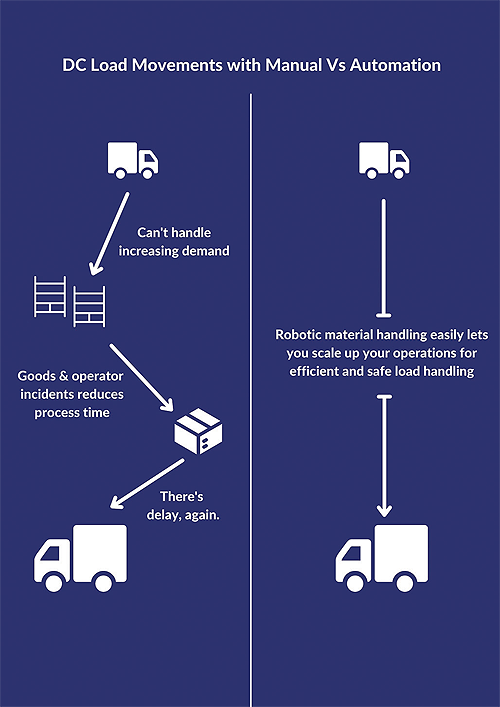
Moving on
For the past several months, the notion of a Supply Chain constraint, was a freighter stuck in the Suez Canal and the ripple impacts of a traffic jam. While anomalistic, that situation pointed to a weak link in the preparedness of getting materials to manufacturing plants or distribution centers.
While not every scenario can be anticipated that could impact getting finished goods to customers, it is remarkable how many constraints are occurring daily and avoidable. Theory of Constraints (ToC) argues that the constraint can be selected and managed.
Indeed, in manufacturing plant floors, warehouses, distribution centers (DCs), and third-party logistics (3PLs), the constraint is the antiquated process of moving raw materials, pallets, finished goods out the door either to a secondary regional DC or to the end-user. Ill-suited fork trucks fail to meet the design specifications of large facilities nor the required structure of high-turn operations, whether in FMCG (fast moving consumer goods) or kitting in an automotive assembly plant.
The predictability of the constraint
ToC is a business philosophy; living with constraints is a reality. John Hayes, (pictured left) Director of Sales for Balyo US (www.balyo.us) shared some of the most common constraints he has observed and how automation and new technology solutions removed these constraints. According to Hayes: “When a warehouse or DC fails to automate the consequences are serious including reduction in capacity, increased costs, and human impact.”
In today’s pandemic or near post pandemic environment sourcing labor has become the overriding issue for all warehouses and DCs. This singular fact causes the above symptoms. The rapid increase in demand and the rapid decrease in labor has created the perfect storm.
Hayes emphasized: “When demand increases but there is a lack of labor, the result is expensive overtime…usually at one and half times the typical hourly rate. I have seen projects justified singularly on reduction of overtime. In this case, the automation system had an unseen benefit. It lowered the overall system utilization adding years to the life of the automation equipment.”
Overtime pay compounds the problems associated with cost as well as a very real human cost. Mobile equipment weighing upwards of 12,000 pounds cause driving fatigue and catastrophic lethal results.
Hayes shared: “One accident in a warehouse or DC that impacts the racking could very well damage and put one complete aisle out of use ending in catastrophic failure. These structural failures don’t just knockdown one rack but many racks. In this event, the concern becomes loss of life.”
Reason warehouses and DCs have fallen behind
Warehouses and DCs are behind technologically because of the general inability of vendors to provide a system that can solve enough problems to make the project financially viable. Recently that has changed.
Balyo Reach Truck
Vendors now have reach trucks that offer horizontal transport (think from dock doors to the end of aisle) as well as the added step of placing the product into the existing standard racking. When the last step is added the ROI finally begins to make sense. Keeping in mind that the lack of labor is driving the interest in automation, it still MUST provide a reliable service at a cost that is justifiable.
While the next freighter stuck in the Suez or Panama Canal cannot be accurately predicted, the ability to automate operations and remove daily functional constraints is predictable,  avoidable, and necessary. AGV vendors have finally moved the constraint.
avoidable, and necessary. AGV vendors have finally moved the constraint.
Thomas R. Cutler is the President and CEO of Fort Lauderdale, Florida-based, TR Cutler, Inc., celebrating its 22nd year. Cutler is the founder of the Manufacturing Media Consortium including more than 8000 journalists, editors, and economists writing about trends in manufacturing, industry, material handling, and process improvement. Cutler authors more than 1000 feature articles annually regarding the manufacturing sector. Nearly 5000 industry leaders follow Cutler on Twitter daily at @ThomasRCutler.
Contact Cutler at trcutler@trcutlerinc.com.
https://www.trcutlerinc.com/